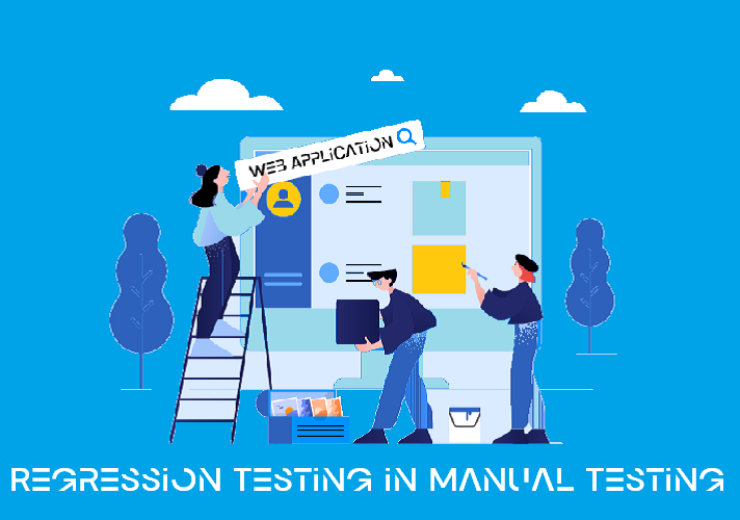Why Software Testing Tools Are Essential for Quality Assurance

What is Software Testing?
————————————
Software testing is a process of evaluating a software product or application to identify any defects, errors, or gaps that may exist between the actual and expected outcomes. The goal of software testing is to ensure that the software meets the requirements and specifications set by the client or end-user.
The testing process involves designing test cases, executing those tests, and analyzing the results to determine whether the software is functioning correctly and meets the required quality standards. Testers use a variety of techniques and tools to identify bugs, errors, and other issues in the software, including automated testing Software tools, manual testing, and exploratory testing.
Essential Features:
Software testing is a crucial aspect of software development that ensures the quality, reliability, and performance of the software product. Testing tools play a vital role in software testing by providing automation, accuracy, and efficiency. In this article, we will discuss why software testing tools are essential for quality assurance.
1. Automation:
Automation is a significant advantage of using testing tools. It helps to reduce the time and effort required for testing by automating repetitive tasks. This results in a faster testing process and quicker turnaround times. Automation also reduces the risk of human error, which can occur when performing the same task repeatedly. By automating tests, we can be sure that every test case is performed accurately and consistently, which improves the overall quality of the testing process.
2. Accuracy:
Software testing tools are designed to provide accurate results by eliminating human error. They ensure that all test cases are executed correctly and results are recorded accurately. Testers are often required to perform the same test cases repeatedly. Over time, this can lead to errors and inconsistencies in the testing process. However, testing tools can perform the same tests hundreds or thousands of times with the same accuracy, ensuring that there are no errors in the testing process.
3. Efficiency:
Testing tools improve the efficiency of the testing process by reducing the time and effort required for testing. They help in identifying issues and bugs quickly, which saves time and effort in the long run. Moreover, they provide real-time feedback, which helps in making informed decisions during the development process. By providing feedback in real-time, developers can quickly identify issues and fix them before they become a major problem. This results in a faster testing process and quicker turnaround times.
4. Scalability:
Testing tools provide scalability capabilities that enable testing to be performed on a large scale. They help in executing test cases on multiple platforms, devices, and environments, which ensures that the software product is compatible with various platforms and devices. For example, a testing tool can run the same test cases on multiple devices with different operating systems, screen sizes, and resolutions. This helps to ensure that the software product is compatible with a wide range of devices and platforms.
5. Cost-effective:
Using testing tools is cost-effective in the long run. They reduce the need for manual testing, which saves time and effort. Moreover, they help in identifying issues and bugs early in the development process, which reduces the cost of fixing them later. By identifying and fixing issues early in the development process, developers can save a significant amount of time and money. This results in a more cost-effective testing process and faster time to market.
Importance of Software Testing:
————————————
Software testing is a crucial aspect of software development that ensures the quality, reliability, and performance of the software product. We shall talk about the value of software testing in this essay.
Quality Assurance:
Software testing helps to ensure that the software product is of high quality. It ensures that the software product meets the requirements and specifications set by the client or customer. Testing helps to identify bugs, errors, and defects in the software product, which can be fixed before the product is released to the market. By testing the software product, we can be sure that it is free from errors and meets the requirements set by the client or customer.
Customer Satisfaction:
Software testing helps to ensure customer satisfaction. It ensures that the software product performs as expected and meets the requirements set by the client or customer. By testing the software product, we can be sure that it is reliable, performs well, and is easy to use. This results in increased customer satisfaction, which can lead to higher sales and revenue.
Compliance:
Software testing helps to ensure compliance with industry standards and regulations. Many industries have specific standards and regulations that must be followed when developing software products. Testing ensures that the software product meets these standards and regulations. By complying with industry standards and regulations, we can be sure that the software product is safe, secure, and reliable.
Competitive Advantage:
Software testing can provide a competitive advantage in the market. A high-quality software product that is reliable, performs well, and is easy to use can provide a significant advantage over competitors. By testing the software product, we can ensure that it meets the requirements set by the client or customer and is of high quality.
Software Testing Models:
————————————
There are several software testing models that are used in software development. Each testing model has its own strengths and weaknesses, and is chosen based on the requirements of the software project. In this article, we will discuss some of the most commonly used software testing models.
1. Waterfall Model:
The Waterfall Model is a linear sequential model that follows a sequential order of phases in software development. In this model, testing is performed after the development phase is completed. This model is suitable for small projects with well-defined requirements and little or no change in requirements during the development process.
2. V-Model:
The V-Model is an extension of the Waterfall Model that emphasizes testing at every stage of the software development life cycle. In this model, each development phase is associated with a corresponding testing phase. This model ensures that testing is an integral part of the software development process and helps to identify issues early in the development process.
3. Agile Model:
The Agile Model is an iterative model that emphasizes flexibility and adaptability. In this model, testing is performed throughout the development process, and the software product is released in small increments. This model is suitable for projects with changing requirements and requires frequent collaboration between the development and testing teams.
4. Spiral Model:
The Spiral Model is an iterative model that combines elements of both the Waterfall Model and the Agile Model. In this model, each iteration involves the development of a small portion of the software product, followed by testing and evaluation. This model is suitable for large and complex projects where there is a high level of uncertainty and change in requirements.
5. DevOps Model:
Development and operations are combined under the DevOps Paradigm. It emphasizes collaboration between the development and operations teams, and focuses on automating the testing and deployment process. This model ensures that testing is an integral part of the software development process, and helps to identify issues early in the development process.
Conclusion
In conclusion, software testing models are important in software development as they help to ensure the quality, reliability, and performance of software products. Each model has its own advantages and disadvantages, and the appropriate model is chosen based on the specific requirements of the software project. Choosing the right testing model is crucial to the success of the software product in the market.




